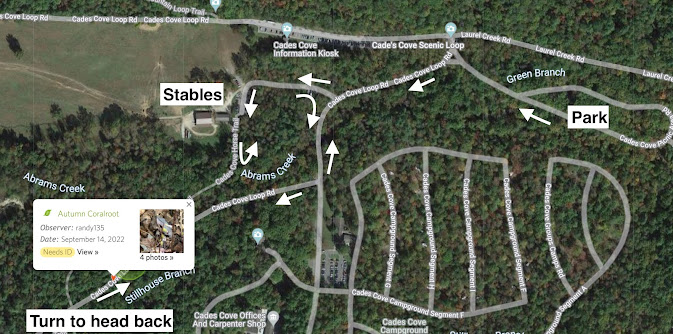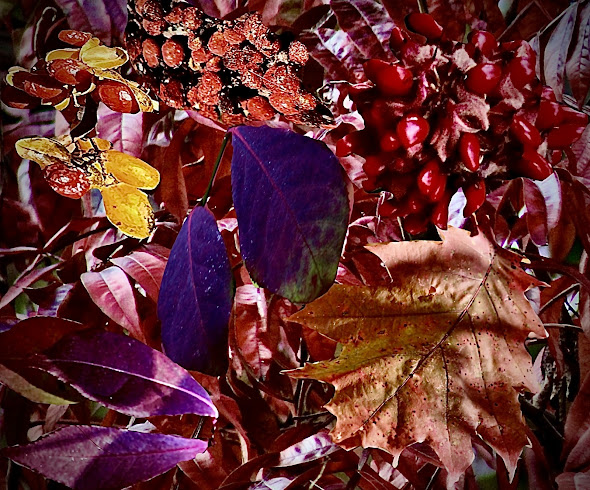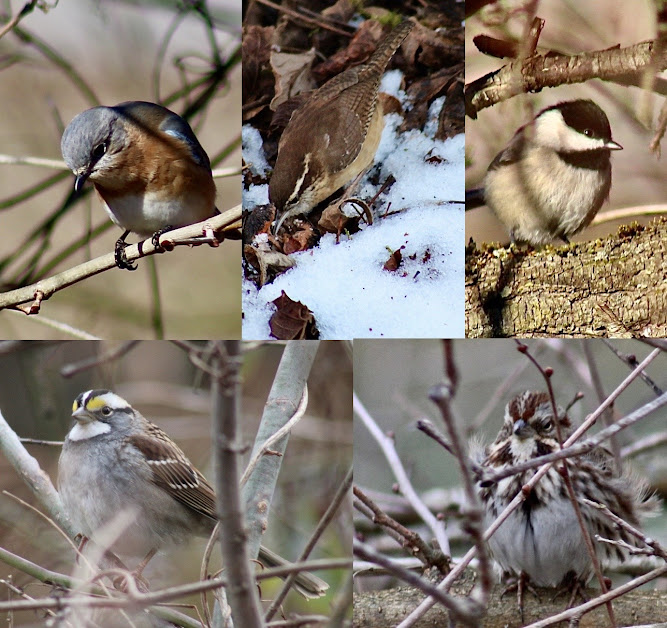Late Summer Early Fall Biodiversity Exploration
Cades Cove September 14, 2022
A good day to get out into the Great Smoky Mountains
I classify this entry of my blog as a Daily Narrative Nature Journal. I am also adding in some science content with the taxonomy or scientific names of my observations.
I am using the iNaturalist App on my iPhone 7 to take my photographs and allowing the program to do the work of uploading the information to the iNaturalist servers. When I return home with my iPhone connected to the internet, l finish the process to gain suggestions for the common names if I do not recognize the species.
If I have a cell signal I can get the uploads to occur in the field. This area of the park does not have a public cell signal but my observations are stored to upload later.
A good introduction to iNaturalist is found at this link:
Today's journey begins slowly with my visual sense on high alert for the unique types of biodiversity found in this area.
To get a zoomed in look at the visuals just left click on one and it will enlarge it in the Galley views of this Blog. Hit escape or click the x in the upper right corner of the visual to return to the page view.
There is still so much to see between the spring wildflowers and the fall leaf colors in this area. One might have to look closely, but these special living organisms can still be found. Biodiversity abounds here in this unique place in the Great Smoky Mountains National Park (GSMNP).
I have been working with the iNaturalist program on my MacBook at home after using the iNat App in the field with my iPhone to record and identify observations quite a bit lately on the Maryville-Alcoa Greenway.
The perfect outdoor weather forecast for today got me up early to drive the 35 minutes from Maryville, TN to get to a parking area at the entrance to Cades Cove.
One of my most interesting finds today is this orchid, the Autumn Coralroot, which is a non-photosynthetic plant having no chlorophyll. It has to rely on soil fungi for getting nutrients. I recorded two different stands of this orchid on my rambling walk over the three hours I was here exploring.
I parked and started in the upper right hand map corner (below) where I found an empty parking space in the Picnic area loop near Green Branch.
The main one way Cades Cove Loop Road is closed on Wednesdays to cars allowing only walkers and bicyclists to not have to worry about motor vehicles while seeing this scenic historical area.
With this great weather the area was packed with cars, bicycles, and walkers. Thankfully Park Rangers and Volunteers were doing a great job of managing the parking areas and keeping traffic from backing up too much.
Below is a map of the area from a screenshot after zooming in when I got back home to work on my MacBook. I was able to zoom into this area very easy since I used my iPhone for all my close up photo observations. My phone sends the location into the iNat program along with the time and date of the photo observation.
Just follow the arrows that I added to the screenshot along with the 3 places I labeled in the white text boxes. In my ramblings I did go off into the woods on both sides of the roads in this journey today.
I was not worried about getting lost as I stayed where I could hear walkers and cyclists talking on the road at all times. When you are in the Smokies don't get off a trail or road unless you are experienced with the area and have a good map.
I walked back to the main loop road and turned right and got several great photos for an iNat observation of an Orbweaver spider (see the video below).
Also along the creek I added a couple good photo observations of Cardinal Flowers and what I think are Black Eyed Susans or a Coneflower species (Genus Rudbeckia) next to the water.
I then proceeded to turn right on the main Cades Cove Loop Road (walking against the normal traffic flow). I walked into the areas on either side of the paved road as well as on the horse trail exploring the undergrowth on the forest floor looking for hidden gems to document.
I mentioned above that I was not sure if I had an observation for Black Eyed Susans or another member of the Genus Rudbeckia. A great thing about iNaturalist is that it gives suggestions for identifications with a link for the user to view pictures and a map of the distribution areas of other species that may look very similar to what one is seeing at the time.
When I studied the pictures of my observation I could not narrow this to a specific species but was confident I had a member of the Genus Rubdeckia.
I am waiting for another person on iNat to give me a specific species suggestion. This naming confusion is why the science field of Taxonomy exists as in different places the common names are different.
Don't get frustrated with all this when you are out observing, but just enjoy the beauty of what you see. My science background and education has me sometimes wanting to get the correct species name. Today I just saw some real pretty Black Eyed Susan like flowers next to a beautiful mountain stream.

According to my iNaturalist post and Research grade confirmation, the below spider is an Araneus marmoreus, commonly called the Marbled Orbweaver or pumpkin spider.
You can full screen the video by left clicking on it the also click the small box in the lower right corner. Hit escape or the X in upper right corner to return to this page.
Did you see this spider releasing his web strands from his rear and using the legs to weave the pattern? This is really cool in that I got to capture this on my iPhone.
Below, I have a second screenshot map from iNaturalist, where I filtered just my observations for randy135 and the date 9/14/22. The techie tweaks of iNaturalist allow a user to have visuals for locations like this to better view where one was when posting observations.
When used online, these maps are interactive and a user is able to click on a teardrop location on the map, and pull up a small view of an observation with a link to go to that observation with information of who posted it, the date, and other details.
An example is the Autumn Coralroot pop up
(on the earlier map above) where I turned around to work my way back to the Picnic area and have lunch before heading home.
The Map key is for the types of species that I observed. This is colored coded for the taxonomic groups and is using common names for most of these. Use it with the teardrop symbols on the map to see where I posted my observations.
This is enough writing and words and it is now time to share selected images from the 54 observations of the 38 species I was able to post to iNaturalist on September 14, 2022.
This three hour exploration roaming around a small area in the woods at Cades Cove in the Great Smoky Mountains National Park (GSMNP) was just a small piece of all the species found in this area.
The GSMNP has the most biodiversity of any National Parks. Go to Discover Life in America (https://dlia.org/) to learn more about how a 24 year effort is still ongoing to identify and document the estimated 60,000 to 80,000 species of life that are thought to exist in the GSMNP. You can become a citizen science person and assist in this research.

These first 2 flowers show the need for the science of Taxonomy in that they are very similar in appearance but different species.
I have observed the common Jewelweed at home on the Greenbelt park as well as around Mount Pisgah in NC.

However the Pale species, I have only seen at the higher elevations and in more "wild" areas like GSMNP and along the Blue Ridge parkway in NC. Maybe research on iNat to see where observations have occurred?
Below are more of my Research Grade observations from this biodiversity exploration on a mid-September day in the Cades Cove entrance area.
Research Grade means another iNaturalist Community user has confirmed my observation identification.
Just view and Enjoy !
A couple of double observations but one can see the diversity between these two individual plants of the same species.

























The spider video is incredible! Amazing amount of detail.
ReplyDelete